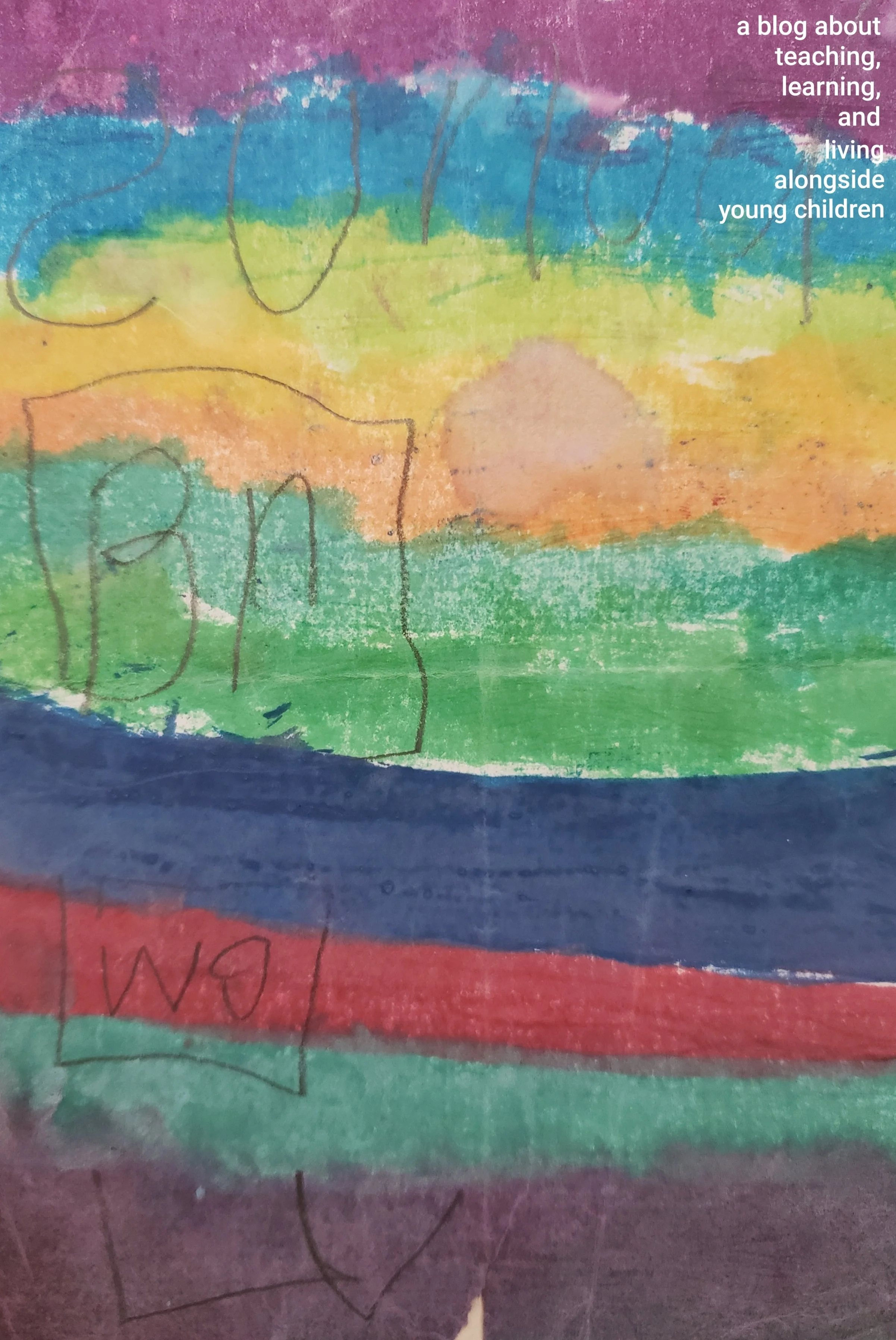Practice, Not Magic: Moving Through Pre-Kindergarten Anxiety
/Illustrated by Leia O., Age 6
Practice, Not Magic is a series of posts about the practical aspects of living alongside young children. Focusing on one vignette, we can parse out the developmental from the situational and think through common dilemmas faced by parents, teachers, cool aunts, chosen family, et al. The principles below can be adapted for either home or the classroom but are a guide for thinking, not a prescription.
Our last post was a story about how I came face to face with what I like to call “Kindergarten Feelings,” the big behavior shifts we often see in children who are anticipating the big leap to kinder. For more about how I personally learned to recognize the signs, click here.
Issue to work through: Kindergarten-bound children often display powerful, even uncharacteristic, behaviors in the weeks (or months) leading up to this change. For the sake of this scenario, a five-year-old child might begin having harder separations from family during drop-off and push back on parents and teachers during transitions, refusing to clean up or trying to negotiate small power struggles, like with clothing or materials.
Context and complications: Children at this age are full of very human contradictions, the way we all are when we experience changes in life. Imagine: you know something big is coming. Something life-changing. You’ve heard everyone you know mention this unfamiliar thing that will make you into a different sort of person (read: big kid). Even if you know someone else who has done this thing, you still don’t know exactly what the future holds for you. You can’t know until you get there.
Imagine that you also know that few or none of your friends or trusted caretakers will be there with you. You will soon be asked to, essentially, go it alone on this totally abstract journey toward “big kid”-dom.
Imagine, too, that your body literally starts to outgrow the places and things you frequent each day. (Wow, my knees hit the handlebars of this trike..this big kid thing is starting to get real...)
Now, imagine that your sense of time is skewed to the point of quasi-non-existence. Is today the day? Is tomorrow the day? Is never the day?
This state of ambiguity can go on for months if there are interviews, playdates, and applications involved. The struggle is not just real - it’s something adults must understand on behalf of the children in our care because they developmentally can not understand it for themselves. Children don’t do things for “no reason.” They often act on emotions for which they don’t yet have context or language. That’s how they learn what to do with those feelings. Our job is not to “fix” either the emotions or behaviors. Our job is to deconstruct them alongside the child and nudge their coping skills in the direction that’s right for us as a family or community.
Supportive Strategy: For children in care, it’s important that families and teachers communicate. Often, parents and I have been able to pinpoint things that might have contributed to a child’s anxiety around change. Things like, “You know what? My spouse and I were talking about the new school last night. My child probably heard us,” or “Oh, yesterday several children came to school late after a playdate at their kindergarten. It started a big conversation that afternoon.” Comparing notes on how a child is feeling throughout the day and what triggers certain behaviors can give us valuable clues about what they need from the adults around them. This is often the best way to see when those kindergarten feelings are really kicking in.
Once the kindergarten cat is out of the bag, it helps to get a calendar. Make it a special calendar just for your child to look through, count, and cross out the days until kindergarten. The more concrete we can make the experience, the more manageable the situation will feel to the child.
What this strategy might sound like:
Start talking to the child about their new school in a way that is positive but leaves space for the child’s not-so-positive feelings, too. Sometimes it helps to ask:
“Do you have questions about kindergarten?”
“How do you feel when you think about your new school?”
“What does your body feel like when you think about kindergarten?”
“Do you remember the first time you came to preschool or a new class? What helped you then?”
Sharing your own stories of change and transition can be especially effective for giving children language and schema, but remember what’s developmentally, emotionally, and relationally appropriate. A simplified version of feeling sad at the beginning of your first day at school or work is fine, but a long monologue about how much you cried when your mother left you is not so helpful.
Ultimately, the best thing we can do for the kinder-anxious child in our care is to just be with them as they learn to sit with and move through these feelings. Then, we can reflect with them on that invaluable success.


